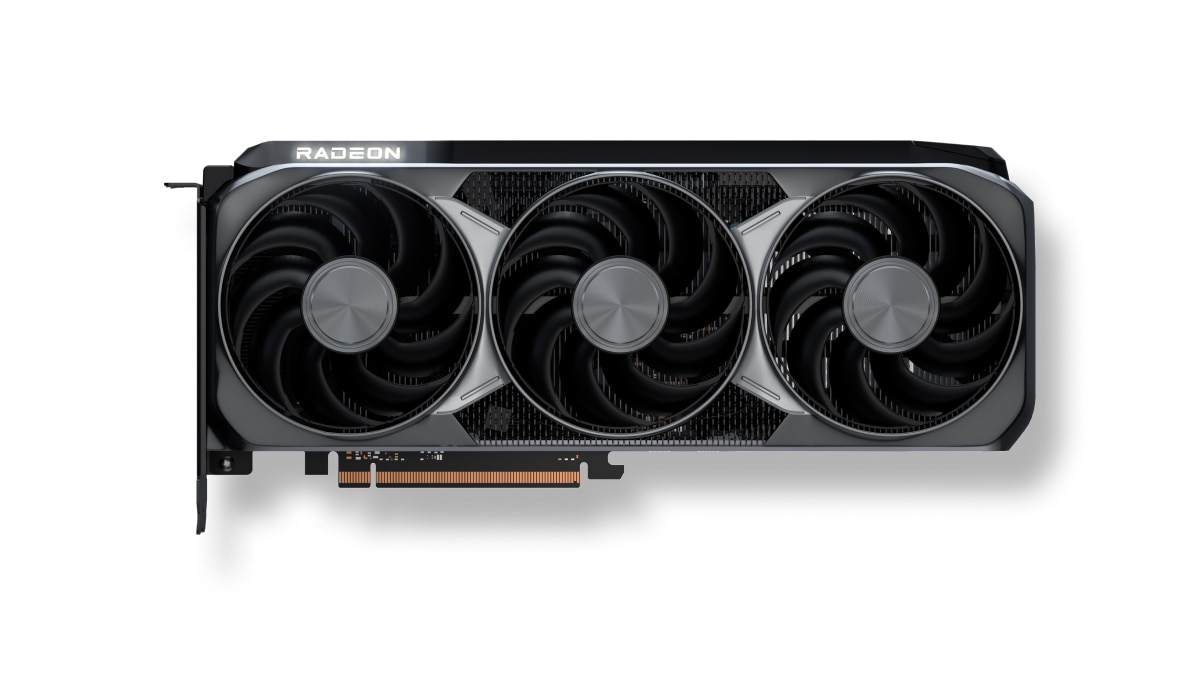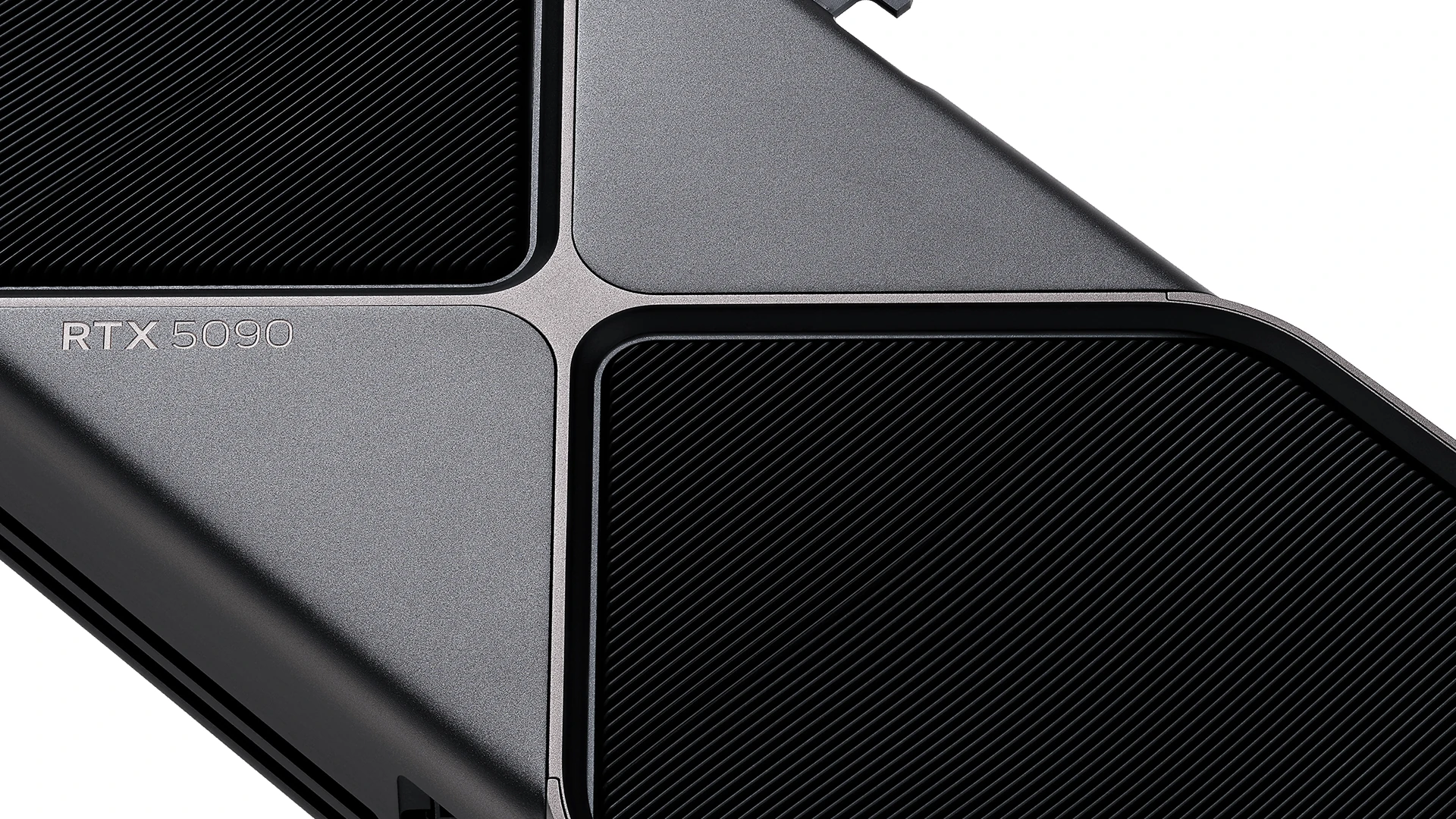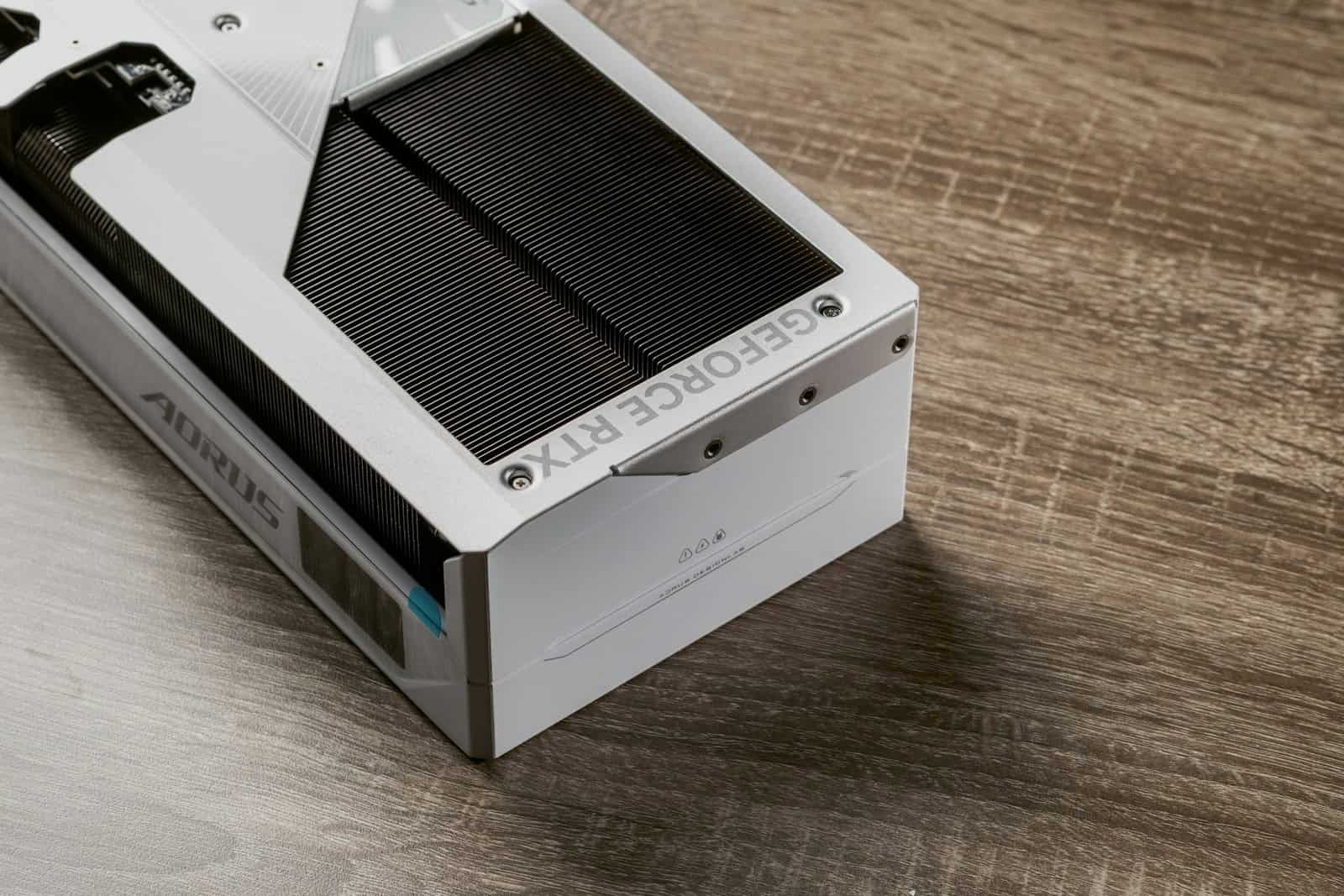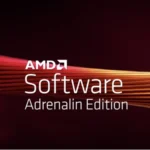The GPU landscape in 2025 is more competitive than ever, with AMD and Nvidia pushing the boundaries of graphics performance and AI-driven technology. The arrival of AMD’s Radeon RX 9000 series and Nvidia’s RTX 5000 lineup marks a new chapter in the battle for gaming and creator supremacy, offering radically different strengths depending on your needs and budget.
While Nvidia continues to dominate the high-end market with raw power and advanced AI tech, AMD is rewriting the rules of value with impressive performance gains and competitive pricing. Whether you’re building a powerhouse rig or a more budget-conscious setup, here’s how the two GPU giants stack up this year.
AMD Radeon RX 9000 Series (RDNA 4)

Launch & Pricing
- Launch Date: March 6, 2025
- Models Released: RX 9070 XT ($599), RX 9070 ($549)
- More models including RX 9050 and RX 9090 XT are expected later in the year.
Architecture & Features
- Architecture: RDNA 4 (Navi 48 XTX)
- Performance: RX 9070 XT delivers up to 48.7 TFLOPS of FP32 compute power.
- AI Cores: 128 dedicated AI accelerators for real-time upscaling, noise reduction, and frame interpolation.
- Ray Tracing: 3rd-gen ray accelerators with improved traversal and denoising.
- Upscaling: FidelityFX Super Resolution 4 (FSR 4) – now rivaling DLSS 3.5 in quality and latency.
- Efficiency: Built on a refined 5nm process, RDNA 4 draws significantly less power than RDNA 3 and rivals Nvidia’s Ada and Blackwell architectures.
Performance & Value
Benchmarks show the RX 9070 XT trading blows with the RTX 4080 Super in 1440p and 4K gaming, while undercutting it by nearly $300. In games optimized for FSR 4 and DirectStorage, performance scales particularly well. AMD has focused on efficiency, driver stability, and maximizing price-to-performance — making these cards ideal for mainstream gamers and streamers.
Nvidia GeForce RTX 5000 Series (Blackwell Architecture)

Launch & Pricing
- Launch Date: January 30, 2025
- Models Released: RTX 5090 ($1,999), RTX 5080 ($1,299), RTX 5070 Ti ($799), RTX 5070 ($699)
- A mid-cycle RTX 5060 and 5060 Ti are expected in Q3 2025.
Architecture & Features
- Architecture: Blackwell (GB202)
- Performance: RTX 5090 delivers up to 280 TFLOPS in ray tracing, with a massive 4,000 AI TOPS.
- AI & DLSS: DLSS 4 introduces multi-frame extrapolation and neural frame prediction, reducing latency and increasing FPS in supported games.
- Ray Tracing: 4th-gen RT cores offer unprecedented lighting, shadows, and path tracing capabilities.
- Memory Bandwidth: 32GB GDDR7 with 1.5 TB/s bandwidth on the RTX 5090.
Performance & Availability
There’s no question the RTX 5090 is the most powerful consumer GPU available, often outperforming the RX 9070 XT by 30–50% in raw compute and ray tracing. But its $2,000 MSRP (with scalping prices as high as $3,999) makes it inaccessible for many. Even the RTX 5070 and 5080, while strong, carry steep price tags in 2025’s inflationary market.
Nvidia continues to lead in AI-driven rendering and features like RTX Video Super Resolution, but that dominance comes at a cost.
Side-by-Side Comparison
| Feature | AMD RX 9070 XT | Nvidia RTX 5090 |
|---|---|---|
| Architecture | RDNA 4 | Blackwell (GB202) |
| Launch Price | $599 | $1,999 |
| FP32 Performance | 48.7 TFLOPS | 150+ TFLOPS |
| Ray Tracing | 3rd-gen RT Accelerators | 4th-gen RT Cores |
| AI Capabilities | 128 AI Accelerators | 4,000 AI TOPS |
| Upscaling Tech | FSR 4 | DLSS 4 |
| Power Draw | ~275W | ~450W |
| Availability | Widely available | Limited, high markup |
Verdict: Who Wins in 2025?
For High-End Enthusiasts & Creators:
If you need the absolute best — for 8K gaming, AI modeling, or Unreal Engine 5 development — the RTX 5090 is unmatched. But its high power consumption, scarcity, and extreme price point make it a niche product, not a mainstream solution.
For Most Gamers:
AMD’s RX 9070 XT is currently the sweet spot for price-to-performance. It offers close-to-flagship gaming power with excellent power efficiency and broader availability — making it the smart choice for most builders in 2025.
The Bigger Picture:
Nvidia still wins in bleeding-edge tech and software ecosystem — DLSS, CUDA, Omniverse — but AMD has closed the performance gap substantially. For gamers focused on value and real-world FPS over benchmark bragging rights, AMD is winning hearts and wallets this year.
Key Takeaways
- Nvidia excels in premium features while AMD offers better value for budget-conscious gamers.
- The performance gap between top cards has narrowed significantly in 2025 compared to previous generations.
- Your choice depends on specific needs – ray tracing and AI capabilities favor Nvidia, while pure price-to-performance ratio favors AMD.
AMD Radeon vs. Nvidia RTX: 2025 Flagship Comparison
The battle between AMD and Nvidia has reached new heights in 2025, with both companies releasing powerful flagship graphics cards that push performance boundaries. Each manufacturer brings unique strengths to the table across architecture, raw power, advanced features, and hardware specifications.
Latest GPU Architectures and Technologies
AMD’s RDNA 4 architecture represents a significant leap from the previous RDNA 3 design. The new architecture features improved compute units with better ray tracing capabilities and enhanced AI processing. AMD has focused on fixing efficiency issues that plagued earlier generations.
Nvidia’s latest cards build upon the Ada Lovelace architecture with refinements that improve both raw performance and specialized workloads. The RTX 5090 and 5080 include more CUDA cores and dedicated ray tracing hardware than their predecessors.
Both companies have invested heavily in AI acceleration. Nvidia maintains an edge with specialized Tensor cores, while AMD has worked to close this gap with dedicated AI processing units in their newest chips.
Manufacturing processes have also advanced, with both companies utilizing improved 5nm or smaller processes for better power efficiency and transistor density.
Performance and GPU Benchmarks
The GeForce RTX 5090 currently leads in raw performance, delivering approximately 15-20% better framerates than AMD’s flagship in most gaming scenarios. This advantage becomes more pronounced in ray-traced titles.
For 4K gaming, both manufacturers offer impressive results. The RTX 5090 consistently delivers above 120 FPS in demanding titles at maximum settings. AMD’s Radeon RX 9070 XT provides competitive performance at a lower price point.
In rasterization games (traditional rendering without ray tracing), the gap narrows significantly. AMD’s cards often match or occasionally exceed Nvidia in pure rasterization performance per dollar.
Benchmark results from comprehensive GPU tests show that while Nvidia leads in raw numbers, AMD offers better value in the mid-to-high performance tiers. The RX 9070 delivers particularly strong results for its price bracket.
Advanced Features and Upscaling Technologies
Upscaling technologies remain critical for maximizing performance. Nvidia’s DLSS 4 technology maintains a quality edge over AMD’s FSR 4, particularly in motion clarity and artifact reduction. However, AMD’s FSR 4 upscaling has made significant strides.
Nvidia’s exclusive multi-frame generation technology continues to provide an edge in supported titles. This AI-powered feature predicts and generates entire frames, boosting performance by 30-50% in optimal scenarios.
AMD has improved their ray tracing performance substantially with RDNA 4, though Nvidia still maintains superiority in this area. The gap has narrowed to around 20-25% compared to the 40-50% difference in previous generations.
Both technologies now work across a broader range of games. FSR 4 maintains an advantage in compatibility with older hardware, while DLSS 4 requires newer RTX cards but delivers better visual quality.
Efficiency, Memory, and Hardware Specifications
Power efficiency has improved for both manufacturers. AMD’s RDNA 4 cards show a 15% reduction in power consumption compared to RDNA 3 at similar performance levels. Nvidia has also improved, though their flagship cards still draw more power overall.
Memory configurations have expanded, with the RTX 5090 featuring 32GB of GDDR7 memory on a 512-bit bus. AMD’s top card includes 24GB of GDDR6 on a comparable bus width.
The RTX 5090 packs over 18,000 CUDA cores, while AMD’s flagship features approximately 14,000 compute units. Despite the numerical difference, architecture efficiency means performance doesn’t scale linearly with these numbers.
Thermal solutions have improved notably on both sides. AMD Radeon GPUs now run cooler than previous generations, addressing a common criticism. Nvidia has also enhanced cooling systems to better manage the high power draw of their premium offerings.
Market Value, Availability, and Gaming Experiences
The graphics card landscape in 2025 shows significant shifts in pricing strategies, availability patterns, and performance expectations across both AMD and Nvidia product lines. Different value propositions have emerged based on target users and specific workloads.
Price, MSRP, and GPU Value
The RTX 5070 currently sits at around 650 EUR, maintaining the same price point as the older RTX 4070. This pricing strategy from Nvidia suggests little movement in making their newer generation more affordable.
AMD’s RX 9070 XT offers better dollar-per-frame value in traditional rasterization workloads, typically priced 15-20% below comparable Nvidia options. The Radeon RX 7800 XT has seen price drops to around $450, making it an attractive mid-range option.
For high-end performance, the RTX 4080 Super has settled at $999, while the Radeon RX 7900 XTX offers similar frame rates in many games at $899.
Intel has entered the competitive space with their Arc B580, offering entry-level performance at budget-friendly prices below $300, though with less driver maturity.
| GPU Model | Typical Price (May 2025) | Performance Tier |
|---|---|---|
| RTX 5070 Ti | $699 | High Performance |
| RTX 5070 | $599 | Mid-High |
| RX 9070 XT | $549 | Mid-High |
| RTX 4080 Super | $999 | Premium |
| RX 7900 XTX | $899 | Premium |
Availability, Scalpers, and Release Trends
The GPU market has stabilized considerably compared to previous years. RTX 5000 series cards are generally available at major retailers without significant markup, a welcome change from earlier release cycles.
AMD’s production capacity has improved, with Radeon RX 9000 series maintaining consistent stock levels since their announcement at CES 2025. This represents a major improvement in AMD’s supply chain management.
Scalping has diminished significantly due to increased supply and more reasonable demand. Most graphics cards are now purchasable within 10% of MSRP, though limited edition models still command premiums.
Release strategies have evolved too. Nvidia continues its staggered release approach, spacing out models over several months, while AMD opted for a more concentrated launch window for their RDNA 4 architecture lineup.
The upcoming holiday season may temporarily affect availability, but manufacturers appear better prepared than in previous years.
Real-World Gaming and AI Workloads
In gaming performance, Nvidia’s GeForce RTX 5070 delivers exceptional frame rates at 1440p resolution, while the 5080 handles 4K with ease. AMD’s offerings provide comparable rasterization performance but still trail in ray tracing workloads despite improvements in RDNA 4.
AMD has made significant strides with their FSR 3.0 upscaling technology, closing the gap with Nvidia’s DLSS 3.5, though Nvidia maintains an edge in frame generation quality. These technologies are crucial for maintaining playable framerates with ray tracing enabled.
For AI tasks, Nvidia GPUs maintain a substantial lead thanks to more mature software support and dedicated tensor cores. Content creators and AI enthusiasts find Nvidia GPUs more suitable for tasks like Stable Diffusion and video rendering.
Power efficiency has improved across both manufacturers, with AMD showing particularly impressive gains in performance-per-watt metrics compared to previous generations.
Driver stability remains crucial for real-world experiences. Nvidia maintains an edge in day-one game support, while AMD has made significant progress in addressing previous driver inconsistencies.
Frequently Asked Questions
Choosing between AMD Radeon and Nvidia RTX in 2025 involves weighing several factors that impact performance, value, and features. Both companies have made significant strides in graphics technology this year.
What are the key differences in performance between AMD Radeon and Nvidia RTX graphics cards in 2025?
Nvidia generally maintains an edge in raw performance for high-end gaming, especially with their top-tier RTX models. The RTX 4090 continues to dominate in pure processing power.
AMD Radeon cards offer competitive performance in rasterization (traditional rendering), sometimes matching Nvidia in standard gaming scenarios. Their improved architecture has closed much of the performance gap that existed in previous years.
The most significant difference remains in specialized workloads. Nvidia excels in ray tracing and AI-accelerated tasks thanks to dedicated hardware, while AMD focuses on strong general performance at more competitive price points.
Which brand offers the best value for gaming in 2025: AMD Radeon or Nvidia RTX?
AMD Radeon cards typically offer better price-to-performance ratios across mid-range and budget segments. Their strategy continues to focus on providing competitive specs at lower price points than equivalent Nvidia offerings.
Nvidia commands premium prices but includes additional technologies like DLSS 3.5 and superior ray tracing that can justify the cost for some gamers. Their cards cost more upfront but deliver exclusive features.
For pure frame rates per dollar spent, AMD holds a very favorable position in 2025, especially for gamers who prioritize high refresh rate gaming at 1080p and 1440p resolutions.
How do AMD and Nvidia graphics cards compare in terms of power efficiency in the current year?
Nvidia has made significant improvements in power efficiency with their latest architecture. Their cards typically deliver more performance per watt, especially in tasks utilizing tensor cores and ray tracing hardware.
AMD has narrowed the efficiency gap in 2025 with their refined manufacturing process. Their latest RDNA architecture shows marked improvements in power consumption compared to previous generations.
The efficiency difference becomes most apparent under heavy loads like 4K gaming or AI workloads, where Nvidia’s specialized hardware maintains performance while managing heat and power consumption more effectively.
Can you provide a comparison of the top-tier models from AMD Radeon and Nvidia RTX in 2025?
The flagship Nvidia GeForce RTX 4090 remains the absolute performance leader in 2025. It offers unmatched 4K gaming capability and excels in creative workloads like 3D rendering and AI tasks.
AMD’s top contender delivers competitive frame rates in standard gaming but falls behind in ray tracing performance. The price difference is significant, with AMD’s flagship typically costing 20-30% less than the RTX 4090.
According to comprehensive benchmarks, Nvidia maintains a 15-25% performance lead in ray-traced games, while the gap narrows to 5-15% in traditional rasterized games.
What advancements have been made by AMD Radeon and Nvidia RTX in ray tracing technology?
Nvidia continues to lead in ray tracing technology with their third-generation RT cores. Their implementation delivers superior performance and image quality in games supporting the technology, with smoother frame rates and more detailed lighting effects.
AMD has significantly improved their ray tracing capabilities in 2025, narrowing the performance gap. Their second-generation ray accelerators deliver much better performance than previous offerings, making ray tracing more viable on Radeon cards.
The practical difference is that Nvidia GPUs can enable more ray tracing effects simultaneously while maintaining playable frame rates, whereas AMD users might need to be more selective with which ray tracing features they enable.
Which graphics card brand has better support and driver updates in 2025?
Nvidia maintains a reputation for stable driver releases and day-one game optimizations. Their more frequent update schedule typically addresses issues quickly and adds optimizations for new game releases within days.
AMD has improved their driver support significantly in 2025, with more regular updates and better stability. Their driver package offers a clean, user-friendly interface with robust customization options.
According to user experiences on forums, Nvidia still holds an advantage in specialized software support, particularly for creative applications and AI tools, while AMD offers better open-source driver support for Linux users.







